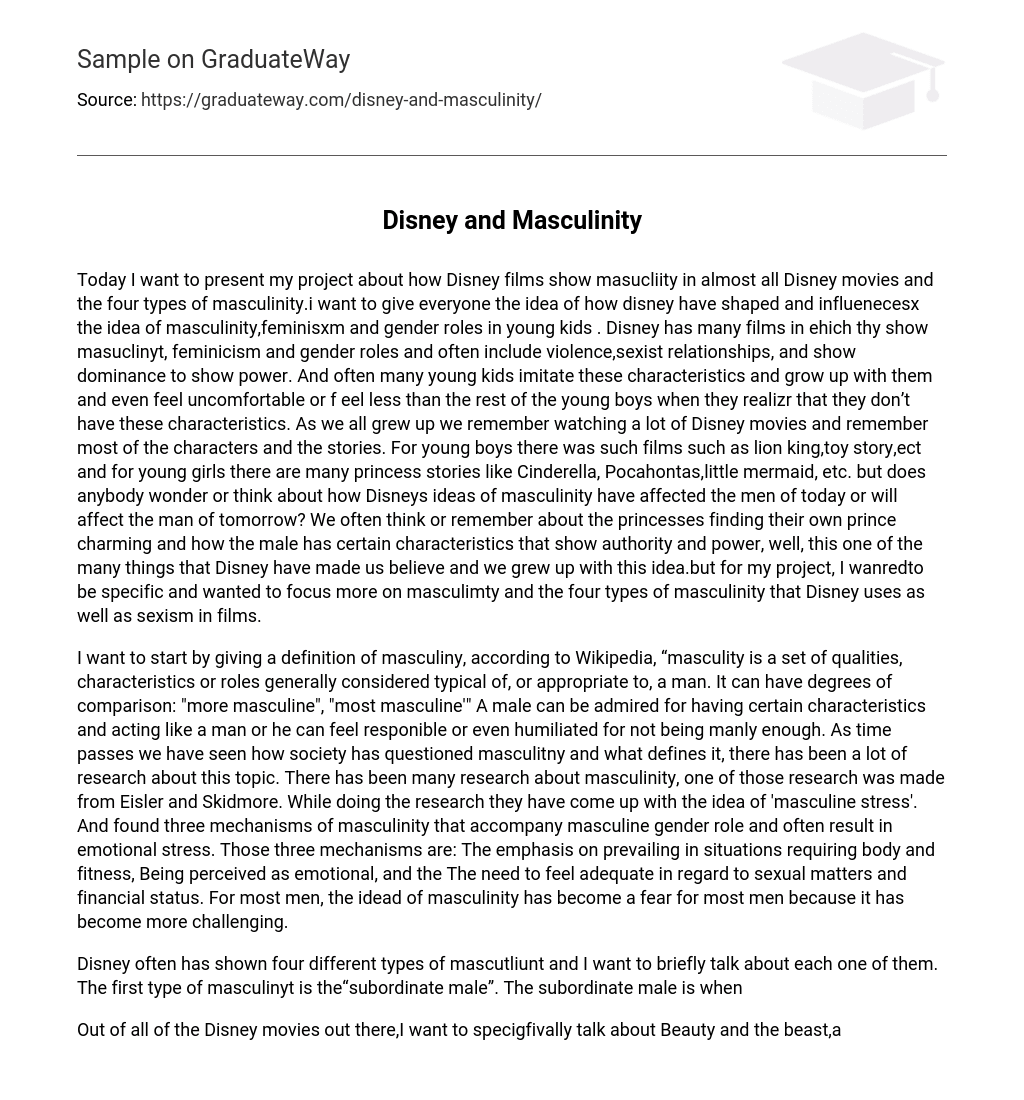The purpose of today’s presentation is to examine how Disney films depict masculinity and their influence on gender roles among young children. Disney often incorporates themes of violence, sexist relationships, and dominance as symbols of power. Consequently, children may imitate these characteristics in their own lives. The popularity of movies like The Lion King and Toy Story among boys and princess stories like Cinderella, Pocahontas, and The Little Mermaid among girls highlights the impact of Disney’s portrayal of masculinity. It is crucial to consider how this depiction has influenced men today and its potential influence on future generations. As children, we were taught that princesses find their Prince Charming and that males should possess specific traits associated with authority and power. These beliefs have shaped our understanding of gender roles due to Disney’s influence. My project aims to explore masculinity by analyzing the four different types depicted by Disney films while also addressing the issue of sexism portrayed in their movies.
Wikipedia defines masculinity as a collection of qualities, characteristics, or roles typically associated with men. Comparisons such as “more masculine” or “most masculine” can be used to gauge its intensity. While some men may be admired for displaying these traits, others may feel pressured or embarrassed if they don’t meet societal expectations. Throughout history, society has extensively analyzed and evaluated the concept of masculinity, leading to significant research on the topic. Eisler and Skidmore conducted a study that introduced the idea of “masculine stress,” which encompasses three mechanisms that often lead to emotional stress among males: emphasis on physical fitness, perception of emotional expression, and need for sexual and financial adequacy. As a result, many men now fear the growing challenges surrounding masculinity.
Disney has showcased four distinct types of mascutliunt, and I will provide a brief overview of each one. The initial type is the “subordinate male,” which refers to a male character who holds a lower position or role.
I would like to discuss Beauty and the Beast, a Disney movie that exemplifies both masculinity and femininity and sets itself apart from other Disney films.





